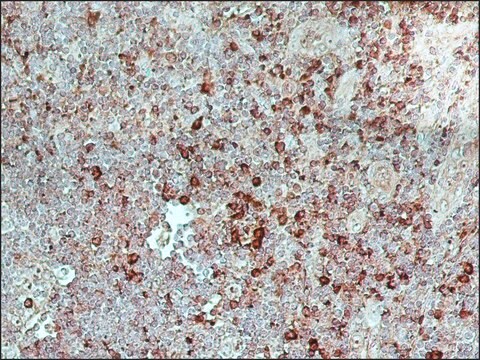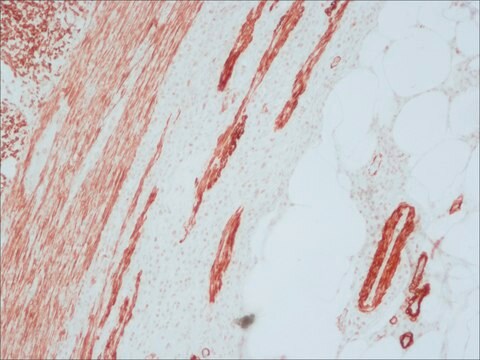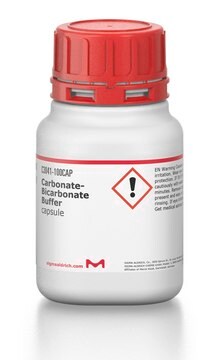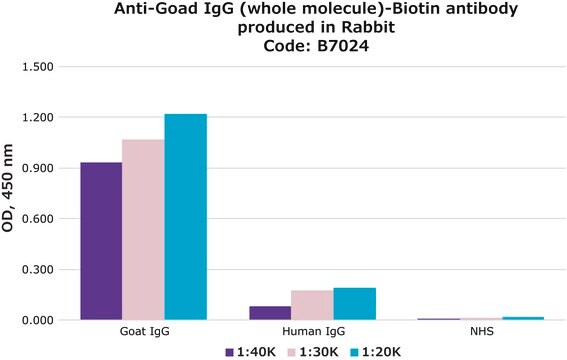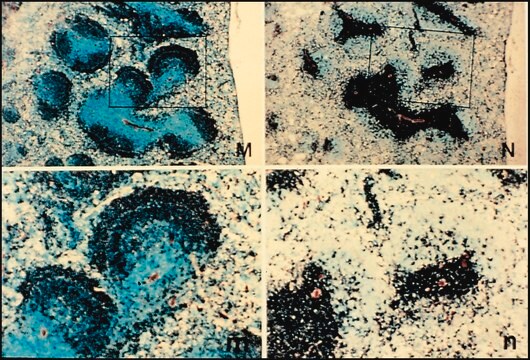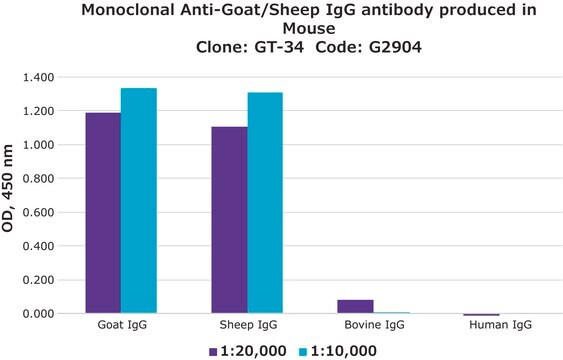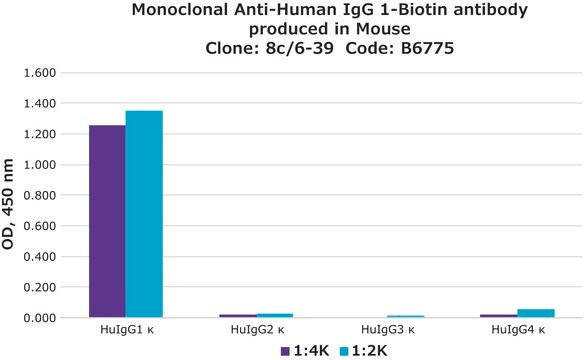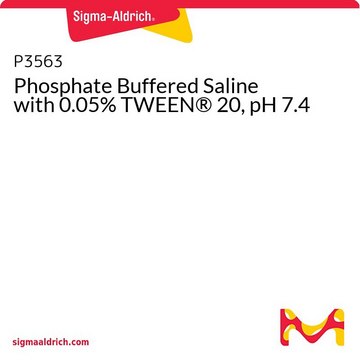B7014
Anti-Goat IgG (whole molecule)–Biotin antibody produced in rabbit
affinity isolated antibody, buffered aqueous solution
Zaloguj sięWyświetlanie cen organizacyjnych i kontraktowych
About This Item
Polecane produkty
pochodzenie biologiczne
rabbit
Poziom jakości
białko sprzężone
biotin conjugate
forma przeciwciała
affinity isolated antibody
rodzaj przeciwciała
secondary antibodies
klon
polyclonal
Formularz
buffered aqueous solution
metody
direct ELISA: 1:20,000
temp. przechowywania
−20°C
docelowa modyfikacja potranslacyjna
unmodified
Szukasz podobnych produktów? Odwiedź Przewodnik dotyczący porównywania produktów
Opis ogólny
An immunoglobulin has two heavy chain and two light chain connected by disulfide bond. It is a glycoprotein. IgG is a major class of immunoglobulin. Goat IgG has two subclasses- IgG1 and IgG2.
Goat IgG is often used for the detection and study of various proteins such as EPAS1 and MIP-3 α among several others. Anti-goat IgG (whole molecule)-Biotin antibody can be used as a secondary antibody to facilitate the detection of such target proteins bound to goat IgGs by immunological assays . Thus, anti-goat IgGs are useful tools for the analysis of target proteins. Anti-Goat IgG (whole molecule)-Biotin antibody is specific for IgG in goats.
Immunogen
Goat IgG
Zastosowanie
Anti-Goat IgG (whole molecule)-Biotin antibody produced in rabbit has been used:
- immunohistochemistry
- immunostaining
- western blot
- immunofluorescence
- immunohistochemical studies
Działania biochem./fizjol.
Immunoglobulin G (IgG) participates in hypersensitivity type II and type III. It mainly helps in immune defense.
Postać fizyczna
Solution in 0.01 M phosphate buffered saline, pH 7.4, containing 1% bovine serum albumin and 15 mM sodium azide
Oświadczenie o zrzeczeniu się odpowiedzialności
Unless otherwise stated in our catalog or other company documentation accompanying the product(s), our products are intended for research use only and are not to be used for any other purpose, which includes but is not limited to, unauthorized commercial uses, in vitro diagnostic uses, ex vivo or in vivo therapeutic uses or any type of consumption or application to humans or animals.
Ta strona może zawierać tekst przetłumaczony maszynowo.
Nie możesz znaleźć właściwego produktu?
Wypróbuj nasz Narzędzie selektora produktów.
Kod klasy składowania
10 - Combustible liquids
Klasa zagrożenia wodnego (WGK)
nwg
Wybierz jedną z najnowszych wersji:
Masz już ten produkt?
Dokumenty związane z niedawno zakupionymi produktami zostały zamieszczone w Bibliotece dokumentów.
Diana Borenshtein et al.
Genome biology, 9(8), R122-R122 (2008-08-06)
Comparative characterization of genome-wide transcriptional changes during infection can help elucidate the mechanisms underlying host susceptibility. In this study, transcriptional profiling of the mouse colon was carried out in two cognate lines of mice that differ in their response to
Monoclonal Antibodies: Principles and Practice (1996)
Patrick Pollard et al.
The Journal of pathology, 205(1), 41-49 (2004-12-09)
The Mendelian tumour syndromes hereditary leiomyomatosis and renal cell cancer (HLRCC) and hereditary paragangliomatosis with phaeochromocytomas (HPGL) result from mutations in nuclear genes (FH and SDHB/C/D, respectively) that encode Krebs cycle enzymes. HPGL tumours are highly vascular and there is
J F Parkinson et al.
The Journal of biological chemistry, 265(21), 12602-12610 (1990-07-25)
Thrombomodulin is an endothelial cell membrane protein which plays a central regulatory role in the protein C anticoagulant pathway. The human thrombomodulin intronless gene was isolated from a genomic DNA library and used to isolate the coding region. A mammalian
Molecular Genetics of Immunoglobulin, 17 (1987)
Nasz zespół naukowców ma doświadczenie we wszystkich obszarach badań, w tym w naukach przyrodniczych, materiałoznawstwie, syntezie chemicznej, chromatografii, analityce i wielu innych dziedzinach.
Skontaktuj się z zespołem ds. pomocy technicznej